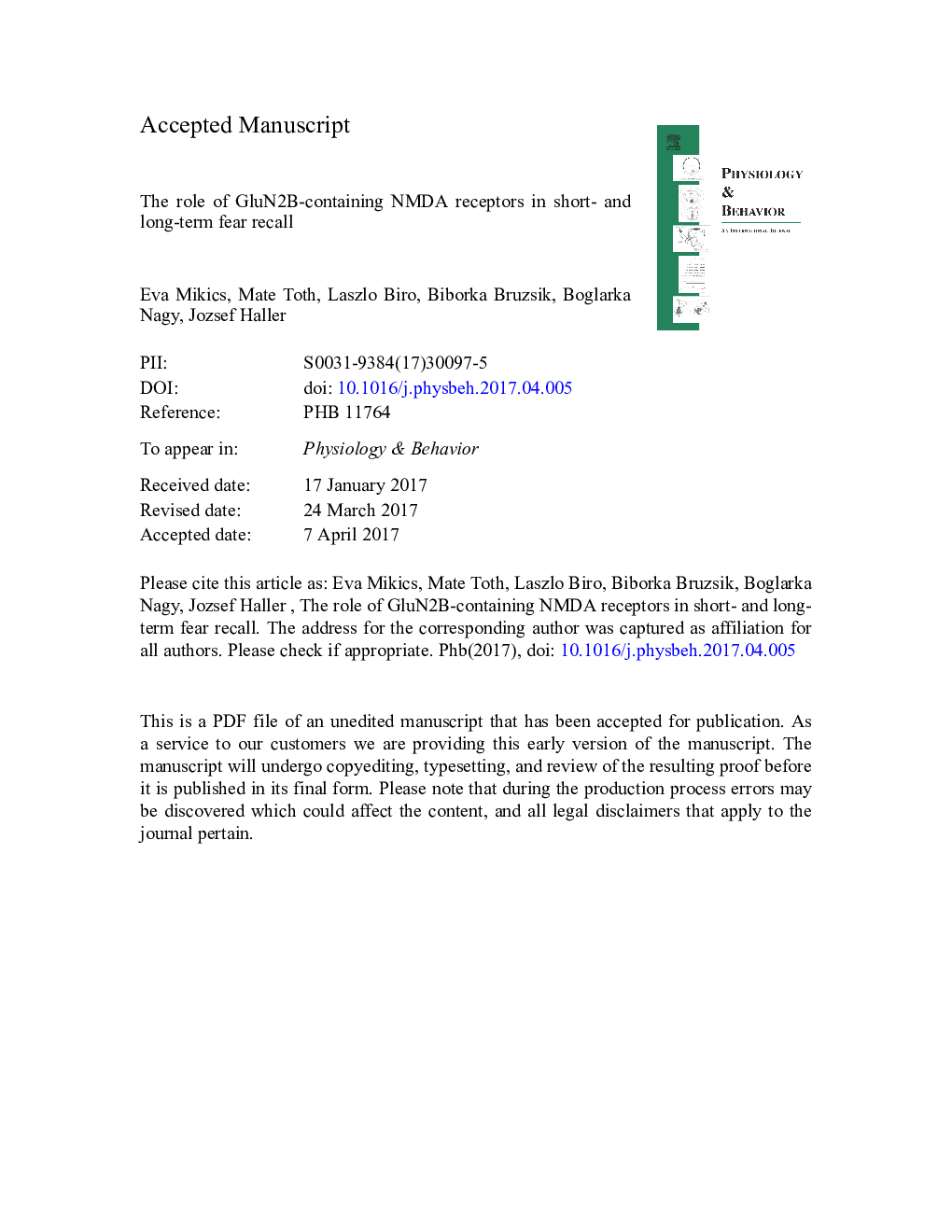| کد مقاله | کد نشریه | سال انتشار | مقاله انگلیسی | نسخه تمام متن |
|---|---|---|---|---|
| 5593722 | 1571142 | 2017 | 24 صفحه PDF | دانلود رایگان |
عنوان انگلیسی مقاله ISI
The role of GluN2B-containing NMDA receptors in short- and long-term fear recall
دانلود مقاله + سفارش ترجمه
دانلود مقاله ISI انگلیسی
رایگان برای ایرانیان
کلمات کلیدی
موضوعات مرتبط
علوم زیستی و بیوفناوری
بیوشیمی، ژنتیک و زیست شناسی مولکولی
فیزیولوژی
پیش نمایش صفحه اول مقاله

چکیده انگلیسی
N-methyl-d-aspartate (NMDA) receptors are crucial synaptic elements in long-term memory formation, including the associative learning of fearful events. Although NMDA blockers were consistently shown to inhibit fear memory acquisition and recall, the clinical use of general NMDA blockers is hampered by their side effects. Recent studies revealed significant heterogeneity in the distribution and neurophysiological characteristics of NMDA receptors with different GluN2 (NR2) subunit composition, which may have differential role in fear learning and recall. To investigate the specific role of NMDA receptor subpopulations with different GluN2 subunit compositions in the formation of lasting traumatic memories, we contrasted the effects of general NMDA receptor blockade with GluN2A-, GluN2B-, and GluN2C/D subunit selective antagonists (MK-801, PEAQX, Ro25-6981, PPDA, respectively). To investigate acute and lasting consequences, behavioral responses were investigated 1 and 28Â days after fear conditioning. We found that MK-801 (0.05 and 0.1Â mg/kg) decreased fear recall at both time points. GluN2B receptor subunit blockade produced highly similar effects, albeit efficacy was somewhat smaller 28Â days after fear conditioning. Unlike MK-801, Ro25-6981 (3 and 10Â mg/kg) did not affect locomotor activity in the open-field. In contrast, GluN2A and GluN2C/D blockers (6 and 20Â mg/kg PEAQX; 3 and 10Â mg/kg PPDA, respectively) had no effect on conditioned fear recall at any time point and dose. This sharp contrast between GluN2B- and other subunit-containing NMDA receptor function indicates that GluN2B receptor subunits are intimately involved in fear memory formation, and may provide a novel pharmacological target in post-traumatic stress disorder or other fear-related disorders.
ناشر
Database: Elsevier - ScienceDirect (ساینس دایرکت)
Journal: Physiology & Behavior - Volume 177, 1 August 2017, Pages 44-48
Journal: Physiology & Behavior - Volume 177, 1 August 2017, Pages 44-48
نویسندگان
Eva Mikics, Mate Toth, Laszlo Biro, Biborka Bruzsik, Boglarka Nagy, Jozsef Haller,